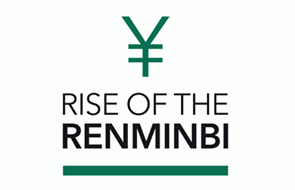
By Stephen Toplis and Raiko Shareef

 China is in the process of internationalising its currency.
China is in the process of internationalising its currency.
In the first instance this is designed to allow those trading with China to deal directly with Chinese counterparts who may choose to transact and price their goods and services in Chinese renminbi (RMB).
The longer term plan, though, is for the Chinese authorities to gain world-wide recognition of the role of their economy on the global stage.
They hope that this will result in the RMB becoming a genuine international reserve currency.
There is, of course, very good reason for this. After all, China has just overtaken the United States to become the world’s biggest trading nation so it should only be right that it has an equally influential currency.
The process of internationalisation has already begun.
On 18 March 2014 direct trading between the NZD and Chinese renminbi in the Chinese onshore foreign exchange market was launched. And, over the last year or so, the Chinese authorities have signed numerous bilateral agreements to facilitate direct conversion of the RMB with other currencies by setting up central bank swap lines.
But there is still a very long way to go before the RMB market can be considered as established.
Indicative of this, it is remarkable that a country as important as China is to the global economy has a currency which is traded only marginally more frequently than the NZD.
It really should be one of the top three. (Though this may not be a totally fair comparison as the NZD is the most highly traded currency in the world when taking into account a nation’s GDP).
What makes an international currency?
Certainly, the currency should be able to be bought or sold on the open market with no restrictions.
On that front, the RMB does not quite measure up. In the first place it is not yet fully convertible.
Moreover, the currency is traded under a ‘managed float’, which means it is allowed to fluctuate only within prescribed bands around a central-bank set rate.
Progress is being made. Since 2005, the band has widened from +/-0.5% to +/-1.0% in April 2012, and most recently to +/-2.0% in March 2014. It is, however, still some way from a free float.
Another important tenet is that non-residents should be willing and able to issue debt securities in the currency, even if they ultimately wish to convert the funds raised into a different currency. For example, it is common for the World Bank’s funding arm to issue debt in NZD and convert the funds into USD for eventual use in the organisation’s development programmes worldwide. These ‘Kauri’ bonds have been a popular funding vehicle for some time. Such options are not yet fully available in mainland China.
There is a fledgling market for equivalent RMB instruments in Hong Kong (known as ‘dim sum’ bonds). Look no further than Fonterra, which tapped the market for the second time earlier this year, raising NZ$247m.
However, these bonds still make up a very small share of global bond issuance and are restricted to Hong Kong.
In short, the RMB still has some way to go to becoming truly international.
The development of financial markets supporting RMB will be a key driver, as investors and firms become more comfortable with taking and managing RMB risk. But this development can only occur as capital is allowed to move more freely through China’s borders. This process is underway, but very slowly.
The Chinese authorities have very good reasons to have chosen the softly-softly path to capital account liberalisation. Today’s interconnected world (and China’s place in it) means that simply throwing open the doors to its capital account would run the risk of a financial crisis were it not conservative in its approach.
So what does all this mean for New Zealanders and New Zealand businesses?
In the first instance, very little:
- Many of the world’s major commodities are priced and transacted in USDs anyway.
- We already have full convertibility with a number of Asian currencies yet still choose to transact in USDs.
- In order for New Zealand buyers and sellers to transact in RMB they would need to have the means to hedge efficiently. This opportunity will probably not exist for some time.
Eventually, once the RMB is fully internationalised, it should, in theory, help facilitate increased trade between our two nations and reduce transaction costs.
In addition, a fully developed market will allow better foreign exchange risk mitigation.
Moreover, it will help facilitate cross-border investment activity and make it easier for tourists in both directions.
All of this, at the margin, should be a positive for New Zealanders who are increasingly exposed to the Chinese economy.
Be that as it may, internationalisation is just that, internationalisation. So, any relative benefit that New Zealand may be accruing due to its early agreements with China will dissipate as full internationalisation occurs.
New Zealand’s relatively positive relationship with China will thus only be maintained through the quality and availability of our product mix not through the currency reform process that China is embarking on.
----------------------------------------------------------
Stephen Toplis is the Head of Research, Markets, at BNZ and Raiko Shareef is the Currency Strategist at BNZ
We welcome your comments below. If you are not already registered, please register to comment
Remember we welcome robust, respectful and insightful debate. We don't welcome abusive or defamatory comments and will de-register those repeatedly making such comments. Our current comment policy is here.